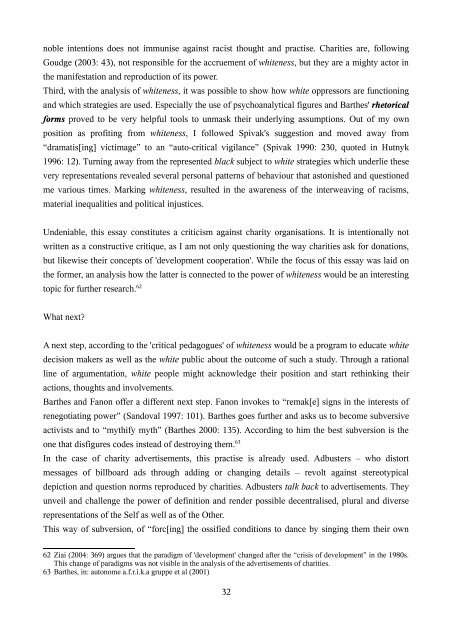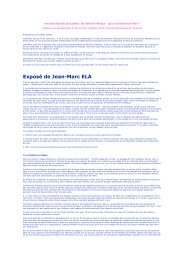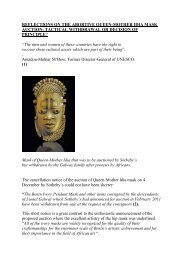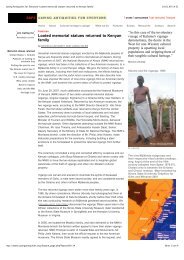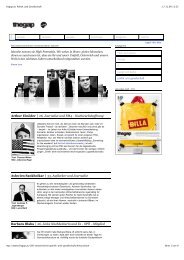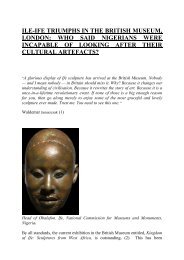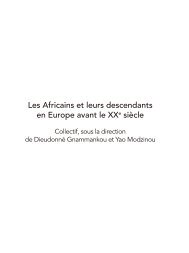White charity
White charity
White charity
- No tags were found...
You also want an ePaper? Increase the reach of your titles
YUMPU automatically turns print PDFs into web optimized ePapers that Google loves.
noble intentions does not immunise against racist thought and practise. Charities are, followingGoudge (2003: 43), not responsible for the accruement of whiteness, but they are a mighty actor inthe manifestation and reproduction of its power.Third, with the analysis of whiteness, it was possible to show how white oppressors are functioningand which strategies are used. Especially the use of psychoanalytical figures and Barthes' rhetoricalforms proved to be very helpful tools to unmask their underlying assumptions. Out of my ownposition as profiting from whiteness, I followed Spivak's suggestion and moved away from“dramatis[ing] victimage” to an “auto-critical vigilance” (Spivak 1990: 230, quoted in Hutnyk1996: 12). Turning away from the represented black subject to white strategies which underlie thesevery representations revealed several personal patterns of behaviour that astonished and questionedme various times. Marking whiteness, resulted in the awareness of the interweaving of racisms,material inequalities and political injustices.Undeniable, this essay constitutes a criticism against <strong>charity</strong> organisations. It is intentionally notwritten as a constructive critique, as I am not only questioning the way charities ask for donations,but likewise their concepts of 'development cooperation'. While the focus of this essay was laid onthe former, an analysis how the latter is connected to the power of whiteness would be an interestingtopic for further research. 62What next?A next step, according to the 'critical pedagogues' of whiteness would be a program to educate whitedecision makers as well as the white public about the outcome of such a study. Through a rationalline of argumentation, white people might acknowledge their position and start rethinking theiractions, thoughts and involvements.Barthes and Fanon offer a different next step. Fanon invokes to “remak[e] signs in the interests ofrenegotiating power” (Sandoval 1997: 101). Barthes goes further and asks us to become subversiveactivists and to “mythify myth” (Barthes 2000: 135). According to him the best subversion is theone that disfigures codes instead of destroying them. 63In the case of <strong>charity</strong> advertisements, this practise is already used. Adbusters – who distortmessages of billboard ads through adding or changing details – revolt against stereotypicaldepiction and question norms reproduced by charities. Adbusters talk back to advertisements. Theyunveil and challenge the power of definition and render possible decentralised, plural and diverserepresentations of the Self as well as of the Other.This way of subversion, of “forc[ing] the ossified conditions to dance by singing them their own62 Ziai (2004: 369) argues that the paradigm of 'development' changed after the “crisis of development” in the 1980s.This change of paradigms was not visible in the analysis of the advertisements of charities.63 Barthes, in: autonome a.f.r.i.k.a gruppe et al (2001)32


